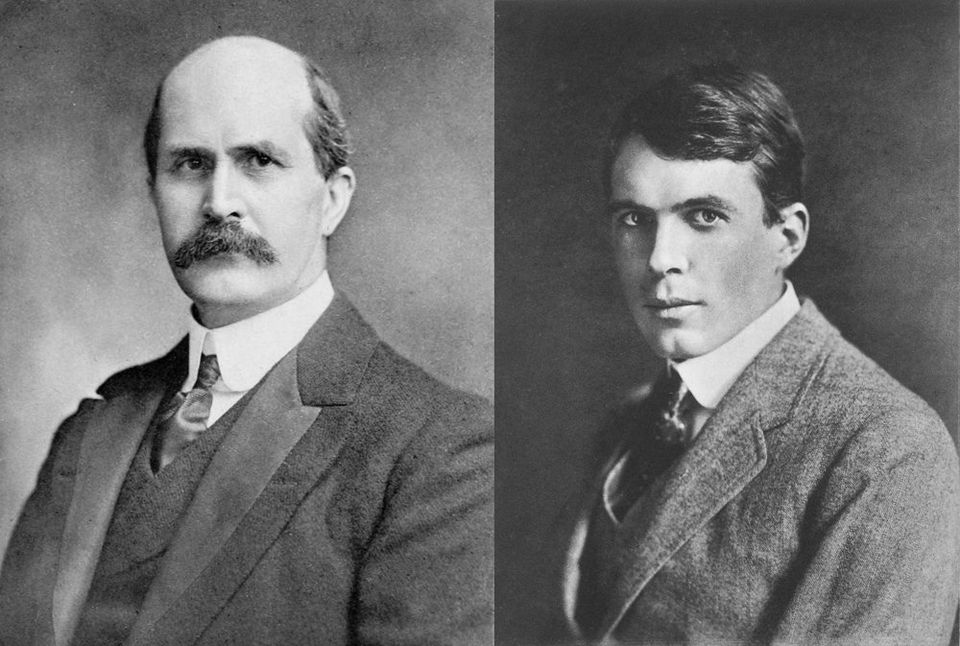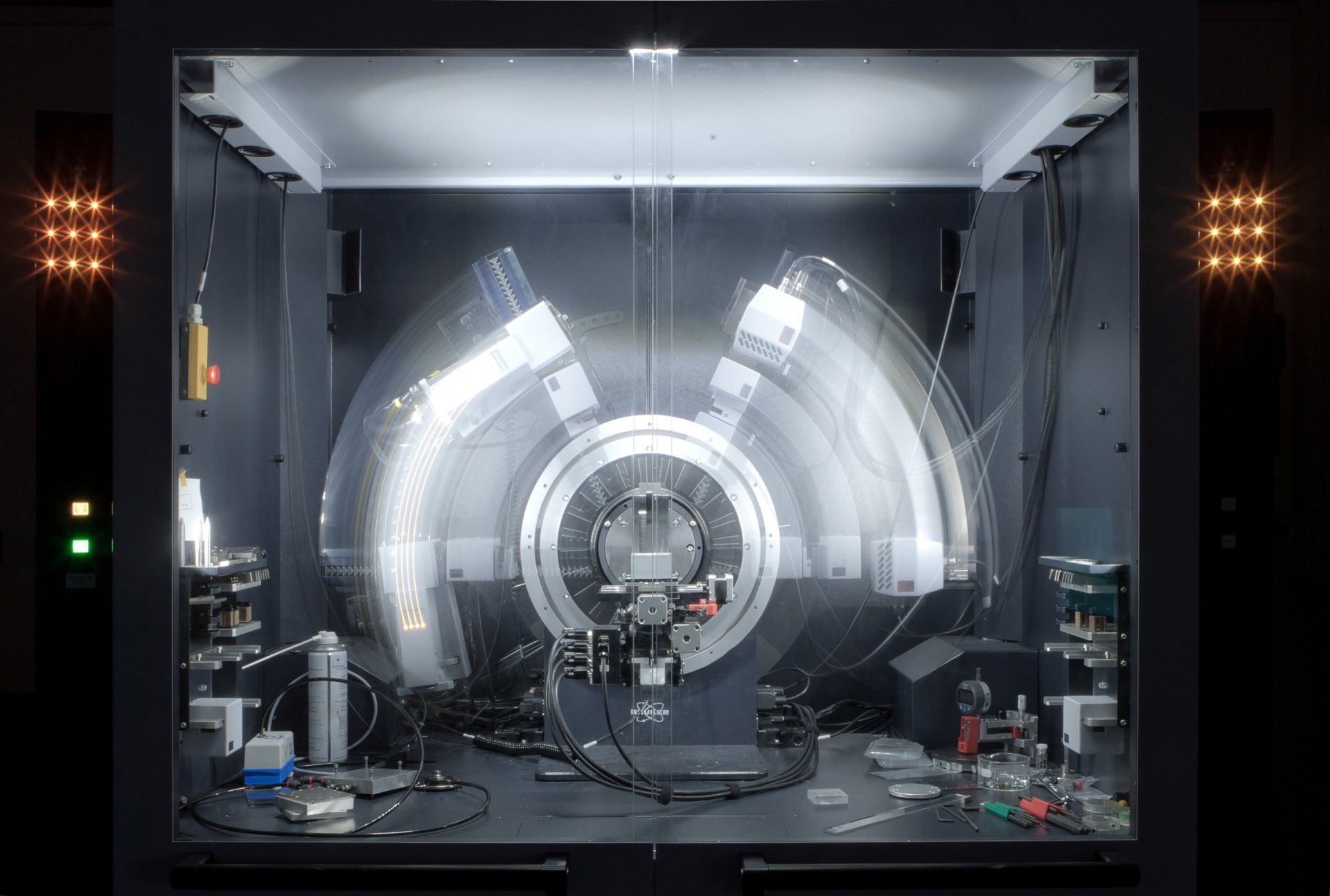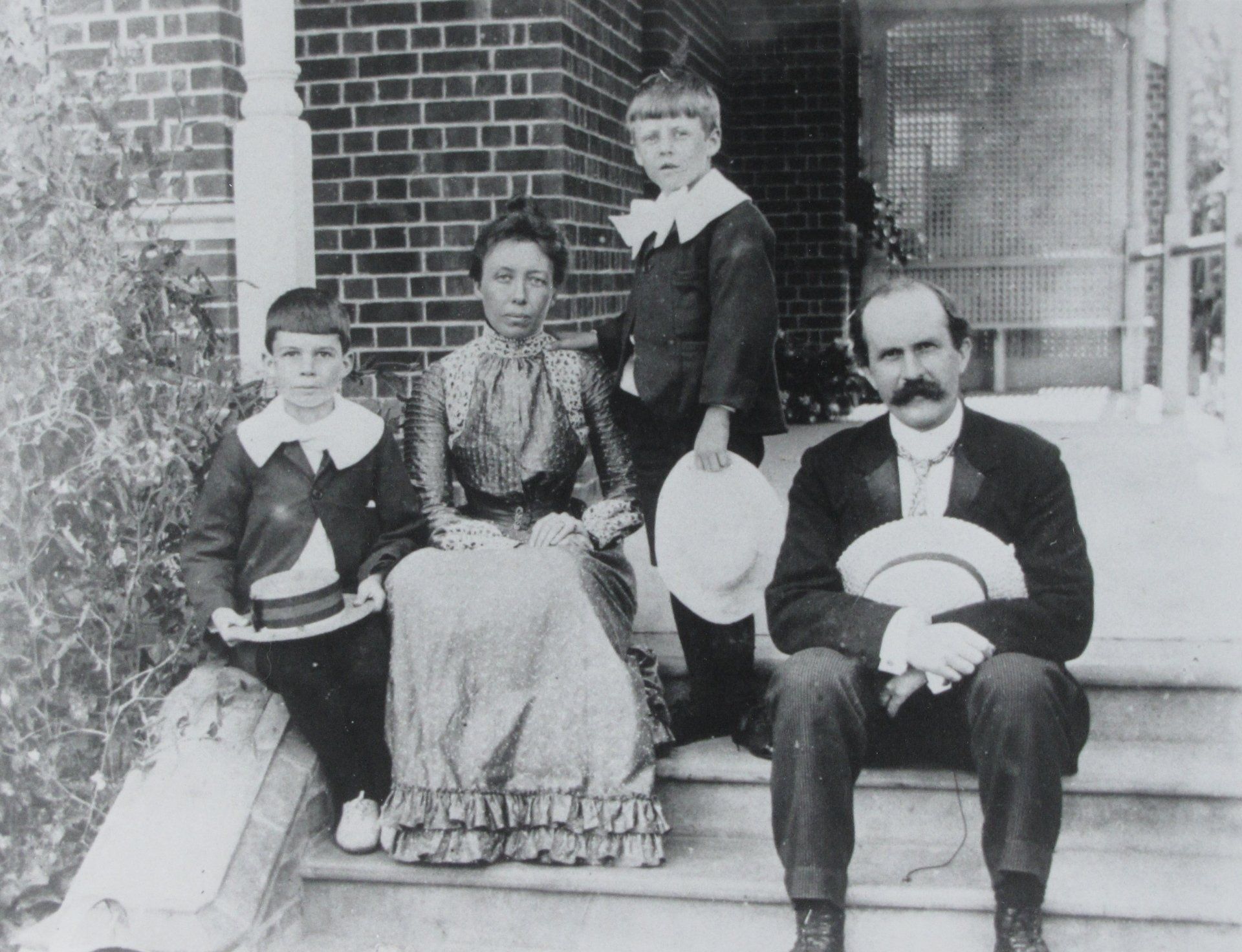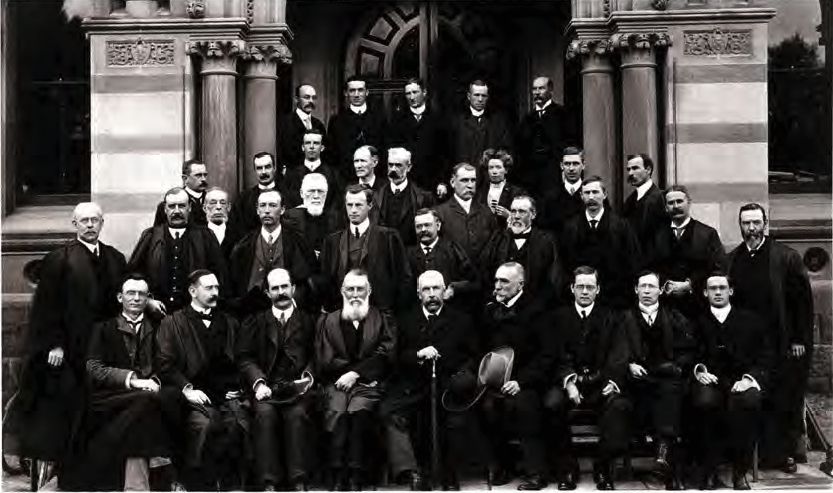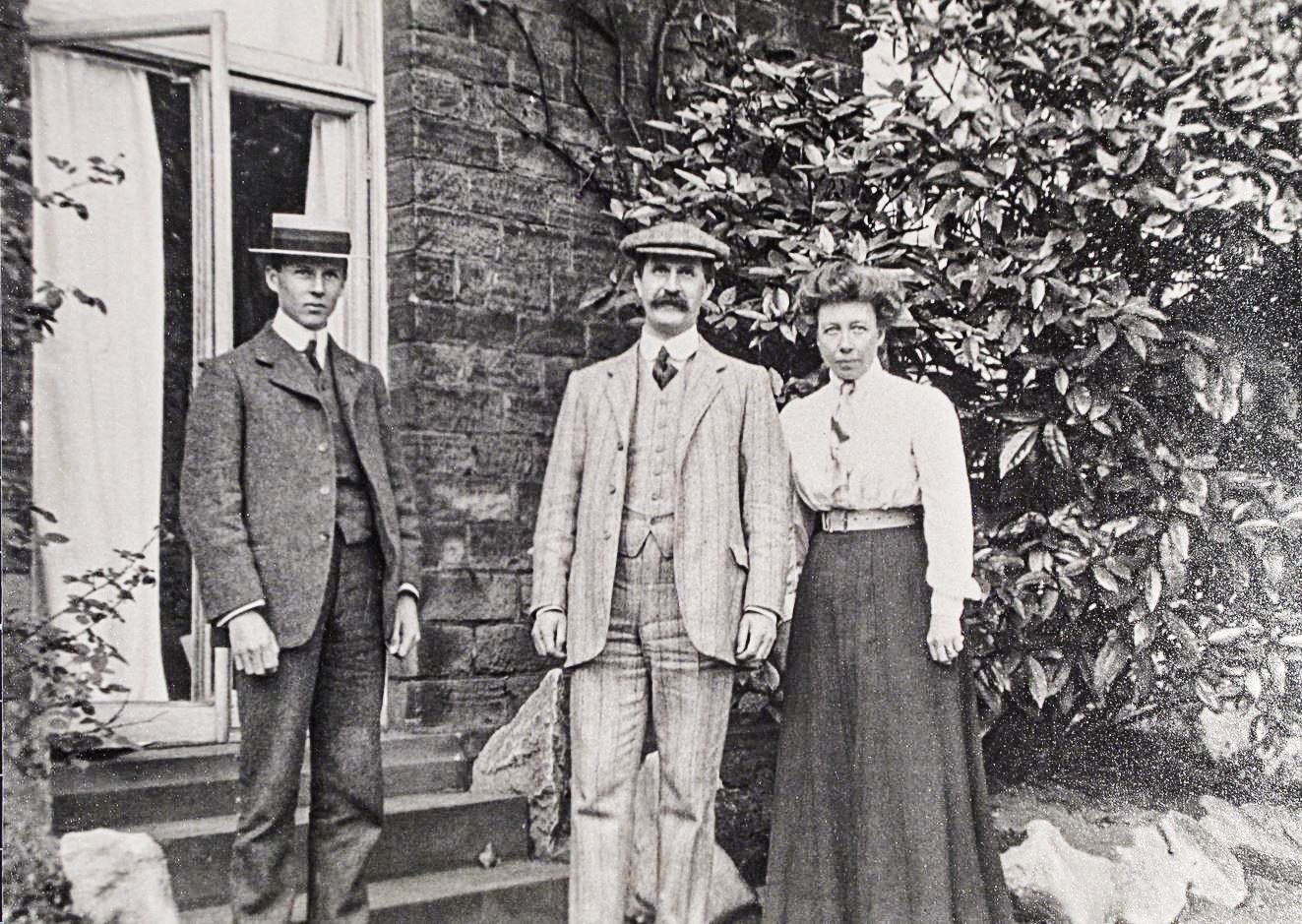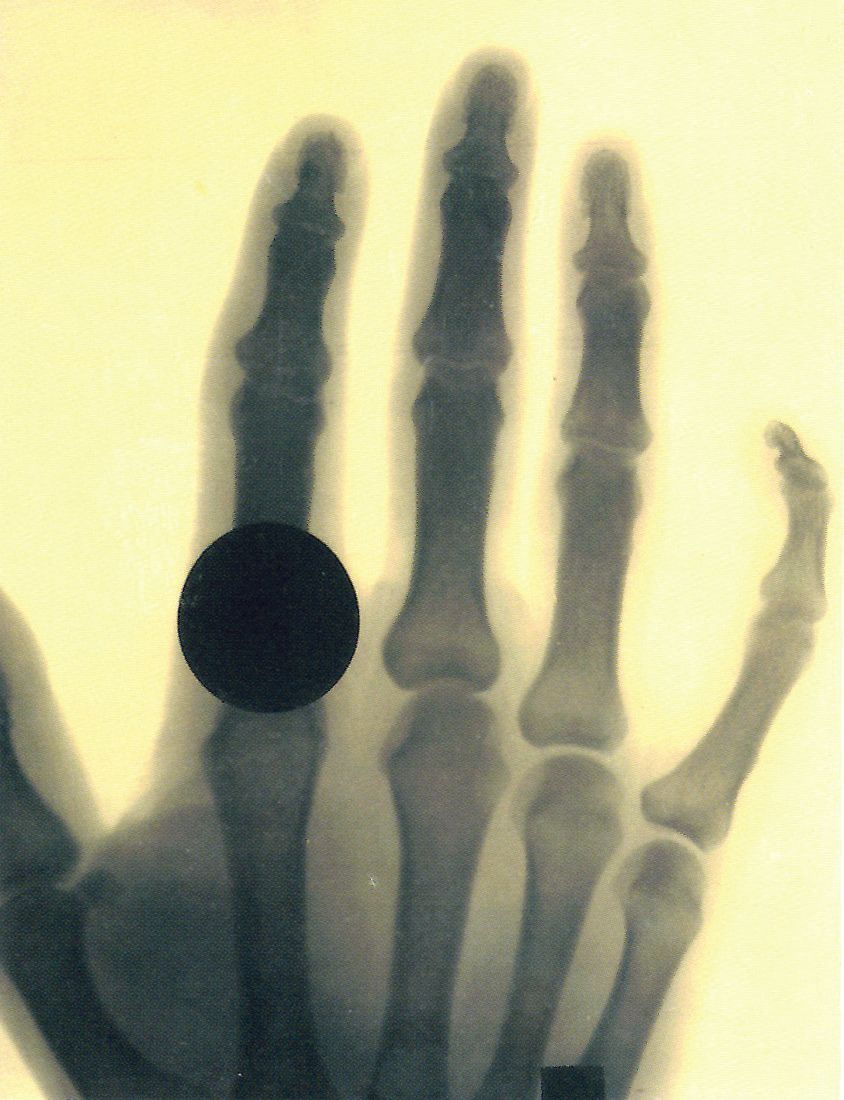Crystal clear
Crystal clear
Two generations conquer x-ray crystallography
Two generations conquer x-ray crystallography
J Robin Warren 1937 –
Nobel Prize for Physiology or Medicine 2005
Shared with Barry J Marshall
Barry J Marshall
1951-
Nobel Prize for Physiology or Medicine 2005
Shared with J Robin Warren
Father and son duo combined mathematics knowledge with x-ray expertise to create a new method of analysis, still used today: x-ray crystallography
Father and son duo combined mathematics knowledge with x-ray expertise to create a new method of analysis, still used today: x-ray crystallography
William and Lawrence Bragg are the only father-and-son team in the history of the Nobel Prize to have won a joint award. Lawrence Bragg is further distinguished by being the youngest person to have ever been awarded the prize, aged 25.
Although the work which won the award was carried out in Britain, Australia lays legitimate claim to share in their glory by virtue of the formative years they spent in Adelaide, where Lawrence Bragg was born and educated.
His father, William henry Bragg (to avoid confusion, the son was known by his second name, Lawrence, though they shared the first name William) was born in the English village of Westward, near Wigton in Cumberland. He was one of three sons to Robert and Mary Bragg, with Robert a farmer, and Mary dying when William was seven.
He was sent to live with his uncle (another William Bragg), a druggist in Leicestershire. As a bright child, he was the youngest boy at the time to pass the local Oxford junior examinations in 1873.
At 13, he was sent to school on the Isle of Man, where his mother’s brother, (another uncle, and not a William) was a teacher.
Williams autobiography tells us that he was bullied at first but went on to be reasonably happy. The religious background of his uncle’s home and the school appear to have had a strong influence on his attitudes during his life. As an adult he was a sceptical scientist, with great faith in fact, evidence, and scientific method.
During his last school year, a religious storm swept the school with a focus on macabre stories of hellfire and damnation. Speaking in a lecture many years later he said, “I am sure that I am not the only one to whom when young, the literal interpretation of biblical texts caused years of acute misery and fear.”
This was tempered by other statements he made, including: “From religion comes a man’s purpose; from science his power to achieve it.”
A biography written on the father William Bragg contended that he did well in maths, with an interest in music, sport, chess and acting, and was appointed head prefect. He won a scholarship to go to Trinity College, Cambridge, in 1881, where he studied maths and physics, achieving first class honours.
He went on to work in the famous Cavendish Laboratory in the Department of Physics at Cambridge University, which was headed at the time by JJ Thompson, who won a Nobel Prize in Physics in 1906 for identifying the electron. William played tennis with Thompson, who suggested that Bragg apply for the chair of maths and physics at the University of Adelaide in South Australia. From a field of 24 applicants, Bragg was short-listed and interviewed in London. Thompson was among those on the selection committee. Bragg got the job and sailed for Adelaide, arriving there early in 1886 at the age of 23, having consumed physics textbooks on the journey to expand his knowledge for this new role. The university, although a pioneering one in Australia, was short of apparatus, so he apprenticed himself to a firm of scientific instrument makers to enable him to build his laboratory equipment. Although William was short on lecturing experience, he trained himself so well that he is remembered at Adelaide for being a gifted and enthusiastic teacher who gave popular practical demonstrations of physics phenomena to students and the public alike.
NOTED TALENT
William also had a musical ear and a talent for playing the flute, which blossomed into an interest in acoustics and led him to becoming involved in helping to design the organ case at the university's Conservatorium of Music. Later, during two wars, both he and Lawrence worked on military acoustic sensing and ranging devices. William married Gwendoline Todd in 1889. He was 26, she was 18. Her father was Sir Charles Todd, who had risen from head of the Adelaide Observatory to become Postmaster-General of South Australia. Todd's wife, Alice, was the source of the name given to the famous town of Alice Springs. William and Gwendoline had three children: two sons - William Lawrence and Robert - and a daughter, Gwendolen. From all accounts, their marriage was a happy one. As a scientist, William Bragg was a relatively late bloomer and he began to consider doing original research only in his early 40s, around 1903 and 1904, when he became president of the physics section of the Australian Association of the Advancement of Science. That burst of creativity was sparked in part by the many extraordinary inventions and discoveries that were happening in physics at the time, which included wireless radio, telegraphy and radioactivity. Most pertinent to the later story of the Braggs, however, was the accidental discovery in 1895 by the German physicist, Wilhelm Roentgen, of a mysterious form of radiation that he named X-rays. William kept up-to-date with these developments and pursued his own research, especially into radioactivity. He exchanged ideas with New Zealander Sir Ernest Rutherford (awarded the 1908 Nobel Prize in Chemistry for research into radioactivity) and made a striking discovery that when alpha particles were emitted by a radioactive source, the distance they travelled could be used to work out what kind of atomic nucleus they came from.
International acclaim followed and he was honoured in 1907 with election as a Fellow of the prestigious Royal Society in Britain, having gained the support of Rutherford, among others. After 21 years, Adelaide could no longer hold him and, thanks to his original radiation research, William was awarded the post Cavendish Professor at the University of Leeds in 1908. Here the focus of the Bragg story begins to turn to his eldest son. "Billy" (confusingly based on his first name) was a quiet, dreamy child. One of his favourite pastimes was shell collecting, which he did on family holidays by the sea. He even chanced upon a new "slender" cuttlefish, which was named Sepia Braggii after him. Lawrence was educated at St Peter's College, Adelaide - the very same school that later nurtured another great Australian Nobel Laureate, Howard Florey (see Mould resistant). Lawrence was so adept academically that he went to Adelaide University at the age of 15 and, at 18, was awarded a first class honours degree in maths while other boys his age were still in high school. But while ahead of his peers academically, Lawrence found social activities quite arduous. He once said to his sister Gwendolen, "You and I find 'things' easier than people, Gwendy."
SHIFT TO PHYSICS
With the family's move to Britain, Lawrence transferred on a scholarship to Trinity College at Cambridge University, where in 1909 he changed his focus to physics. He graduated with first class honours in 1912. It was an exciting and fast-moving time in physics. Since Roentgen's discovery of X-rays, a string of researchers had been probing their mysteries and had made important progress in understanding not only what they were but what they revealed about the nature of materials and their structure. The year' before Lawrence graduated from Cambridge, the British physicist Charles Barkla had discovered that different metals scattered X-rays in different ways- in short, that each element makes its own peculiar kind of X-rays (an insight that won him the Nobel Prize in 1917). However, it was not known at the time whether X -rays were streams of particles or a wave-like radiation, more like light.
The German physicist Max von Laue reasoned that passing X-rays through crystals to see whether they could be diffracted - forced to change direction - might offer insight into that dilemma. In 1912, von Laue's experiments revealed not only that the mystery rays could be diffracted but that they formed a pattern on a photographic plate, revealing them to have the properties of waves, not particles-for which he, too, received a Nobel Prize in 1914. The newly graduated Lawrence Bragg had started actively studying von Laue's findings as soon as they became known; his father had drawn his attention to them during a summer vacation. Lawrence returned to Cambridge and by November that year had published his first paper on the topic in the Proceedings of the Cambridge Philosophical Society. Importantly, he had conducted some ingenious experiments and worked out what is now known as the Bragg equation, that is, how to accurately calculate the wavelength of each type of X-ray from its diffracted pattern. It related the angle that X-rays are deflected by a crystal to the distance between its orderly arranged atoms. William's instrument-making skills then came to the fore and soon the pair had a purpose-built X-ray spectrometer available to put the maths to work and measure the deflection angles, again during vacation time together. These instruments went on to be developed by using photographic film to record the diffraction patterns to electronics counters, but until computers came along it was tedious and time-consuming to use them for analysing three-dimensional structures. William and Lawrence studied the structures of many crystals, including proteins.
Physicists soon jumped onto this marvellous new bandwagon for probing the secrets of matter. So did chemists, who were previously confined to studying chemical reactions between compounds to try to work out their structures. This was especially important for methodically devising new pharmaceutical products, but it was laborious and slow. Now, with an X-ray spectrometer, they could study the compound of interest directly.
COMPLEMENTARY SKILLS
The Braggs knew they had discovered something profound but they could have hardly foreseen the myriad uses their work would be put to. William and Lawrence Bragg brought complementary interests and skills to their collaboration. The father's experience, investigating expertise and command of instruments were important, but his interest in diffraction was what it revealed about X-rays. The son, however, had a rare intuitive insight and a great capacity to conceptualise problems and express them mathematically. "In saying something about the work for which we were awarded the Nobel Prize, I feel that I cannot but speak for both my father and myself," Lawrence said in a speech in Stockholm in 1922. "It was with his inspiration and under his guidance that any contributions of my own were made, and it was one of the proudest moments of my life when I heard that you had associated my name with his and awarded the prize to us jointly."
The generous and inclusive public praise and credit for his father apparently masked tensions he felt privately about the issue. Even so, the Nobel Prize clearly meant a great deal to him and he accepted it at such a young age with due humility. He said: "That you should have given me, at the very outset of my scientific career, even the most humble place amongst their ranks, is an honour of which I cannot but be very proud." He also credited von Laue, "whom we owe the great discovery which has made possible all progress in a new realm of science, the study of the structure of matter by the diffraction of X-rays". The pair won the prize in Physics on November 12, 1915 for "a discovery of epoch-making significance", as the Nobel citation speech put it, into X-ray crystallography. Put simply, it was a method for analysing the three-dimensional structure of crystals, atom by atom. Lawrence Bragg worked out the mathematics of how to do it and his father invented the instrument- the X-ray spectrometer- that made such precise measurements possible. Together, they founded a new branch of science that is still in everyday use in laboratories the world over. It was a fundamental advance, an enabling technique with far-reaching consequences. It has since been used to unravel the structure of everything from diamonds to drugs, vitamins, insulin, bacteria, viruses and countless other organisms, compounds and materials. As such, it ushered in a revolution in physics, chemistry and biology.
In giving the citation speech, professor G Granqvist, the chairman of the Nobel Committee for Physics of the Royal Swedish Academy of Sciences, said: "Thanks to the methods that the Braggs have devised for investigating crystal structures, an entirely new world has been opened and has already in part been explored." In turn, that brought more Nobel Prizes for many other researchers who followed in their footsteps. Appropriately, in 1947 Lawrence Bragg helped to set up what became the Medical Research Council Laboratory of molecular biology at the Cavendish Laboratory, Cambridge, and under his direction, Francis Crick and James Watson famously used X-ray crystallography to work out the double-helix structure of DNA. William and Lawrence worked together from 1912 to 1914, investigating a range of crystal structures. They jointly published the results in abridged form in 1915 in the paper titled "X-rays and Crystal Structure", for which they were awarded the Nobel Prize. From 1915 to 1919, Lawrence was involved in the war effort as a technical adviser in the map section of British army headquarters in France, on sound ranging or determining the distance of enemy artillery from the sound of their guns He was serving there when he heard the news about his prize. In 1921, he married Alice Hopkinson of Cambridge, and they had two sons and two daughters (their eldest son became chief scientist with Rolls Royce). He moved back to Cambridge as Cavendish Professor of Experimental Physics from 1938 to 1953, and again served as a scientific advisor in Britain and Canada during World War II.
There was also a string of other awards, honorary degrees and fellowships, and in 1941 he was knighted. When William heard the news, he was delighted. In a letter to his sister-in-law, Lorna Todd, on January 5, 1941, he wrote: "You will learn by newspaper cable that Willie is knighted. Isn't that fine? ... He will have to be Sir Lawrence: we can't have confusion worse than ever. I am so very glad for his sake. In spite of all care, people mix us up and are apt to give me first credit on occasions when he should have it. I think he does not worry about that all now, and will never anyhow have cause to do so now. I think I am more relieved about that than he is." Because he won his Nobel Prize so young, Lawrence was one of the few Laureates able to celebrate a golden jubilee, as a special guest at the awards ceremonies in Stockholm in 1965. While there he delivered the first Nobel Guest Lecture - reviewing developments in his field since 1915.
William's subsequent career and life were equally distinguished. After advising on anti-submarine matters during the war, he established a school of crystallographic research at University College, London, from 1915 to 1925. He then served as director of the Royal Institution (of Great Britain) and the Davy Faraday Research Laboratories in London, attracting and inspiring many young scientists who went on to great things. He maintained a broad and fruitful interest in research as well. As one biographer put it: "His research interests embraced a great many topics and he was adept at picking up a subject, almost casually, making an important contribution, then dropping it again." In 1923, William became head of the Royal Institution serving in that post for two decades, only to be succeeded by Lawrence. William was a popular lecturer and writer about science as well. He became well known for giving Christmas lectures for children, which also became best-selling books. Sir William Bragg died in 1942. Those who knew him said he remained a simple and humble person, as well as a proud father. When Lawrence succeeded his father at the Royal Institution, he developed that tradition by introducing year-round lectures that attracted 20,000 schoolchildren a year. Lawrence also became a popular and successful lecturer who made many radio and television appearances. He retired in 1965 and quit the Royal Institution the following year, but continued to lecture there until his death in 1971. A fitting postscript to the lives of the two Braggs came from the winner of the 1964 Nobel Prize in Chemistry, Dorothy Hodgkin. She recalled in a 1988 BBC Radio interview how the Braggs and X-ray crystallography were fundamental not just to her winning the prize but to her whole passion for, and career in, science.
Vital statistics
Name: William Henry Bragg
Born: Cumberland, England
Birthdate: July 2, 1862
Died: March 10, 1942
School: King William’s College, Isle of Man
University: Trinity College, Cambridge
Married: Gwendoline Todd in 1889
Children: Lawrence, Robert, Gwendolen
Lived: Mainly Cambridge
Awards and accolades
1885: Elected to the Professorship of Mathematics and Physics in the University of Adelaide
1909: Cavendish Professor of Physics at Leeds (1909-1915)
1915: Nobel Prize in Physics
1916: Rumford Medal
1917: Awarded CBE
1920: Awarded a British knighthood
1925: Quain Professor of Physics at University College London (1915-1925)
1930: Copley Medal
1931: Order of Merit
1935: Elected President of the Royal Society
William Bragg was an honorary doctor of 16 universities and a member of the leading foreign societies. He was the author of many books, including Studies in Radioactivity)· X-Rays and Crystal Structure; The World of Sound; Concerning the Nature of Things; Old Trades and New Knowledge; An Introduction to Crystal Analysis) and The Universe of Light.
Vital statistics
Name: William Lawrence Bragg
Born: South Australia
Birthdate: March 31, 1890
Died: July 1, 1971
School: St Peter's College, Adelaide
University: Adelaide University; Trinity College, Cambridge
Married: Alice Grace Jenny Hopkinson in 1921
Children: Stephen, David, Margaret and Patience
Lived: Mainly Cambridge
Awards and accolades 1914: Appointed as Fellow and Lecturer in Natural Sciences at Trinity College
1914: Barnard Medal
1915: Nobel Prize in Physics
1918: Awarded OBE and MC
1919: Langworthy Professor of Physics at Manchester University (1919-37)
1921: Elected Fellow of the Royal Society
1931: Hughes Medal of the Royal Society
1937: Director of the National Physical Laboratory
1938: Cavendish Professor of Experimental Physics, Cambridge
1941: Awarded a British knighthood
1946: Royal Medal of the Royal Society
1948: Roebling Medal of the Mineral Society of America
1958: Chairman of the Frequency Advisory Committee
1967: Companion of Honour
Lawrence was awarded many honorary fellowships and was an honorary or foreign member of American, French, Swedish, Chinese, Dutch, and Belgian Scientific Academies, besides being Membre d'Honneur de la Société Française de Minéralogies et Cristallographie. Together with his father, he published various scientific papers on crystal structure.
Why they were awarded the Nobel Prize
The work of William Bragg and his son Lawrence in 1913-1914 founded a new branch of science of the greatest importance and significance: the analysis of crystal structure by means of x-rays. The use of x-rays as an instrument for the systematic revelation of the way in which crystals are built was entirely due to the Braggs. They devised a method for analysing the three-dimensional structure of crystals, atom by atom. Lawrence worked out the mathematics behind it and William invented the instrument, the x-ray spectrometer. The branch of science they founded is still used every day in laboratories all over the world.
